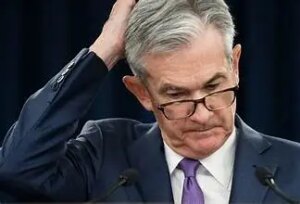Understanding Stagflation: What to Expect in 2025

As we look toward the future, 2025 is signaling a potentially turbulent period for the U.S. economy, one marked by the ominous shadow of stagflation. Thanks to insights from economic modelers like Socrates, we know that this phenomenon—a combination of stagnating economic growth and rising inflation—is not just theoretical; it is a looming reality that the Federal Reserve can no longer ignore.
What is Stagflation?
Stagflation is an economic condition where high inflation coexists with stagnant economic growth. Traditionally, inflation thrives in a growing economy—demand rises, driving prices up. However, during stagflation, prices soar while economic growth remains muted, leading to a perplexing and difficult economic environment.
The Current Economic Landscape
In a post-COVID landscape, many Americans have experienced firsthand the effects of rising prices—think gas, groceries, and housing. Federal Reserve Chair Jerome Powell has openly acknowledged that recent tariffs announced by the Biden administration have escalated inflation and could contribute to reduced economic growth. The dual mandate of the Fed—to maintain a 2% inflation target while fostering maximum employment—becomes exceptionally challenging under these conditions.
Powell states, “The economic effects, which will include higher inflation and slower growth, may place US rate setters in the challenging scenario in which our dual-mandate goals are in tension.”
The Impact on Employment and Business
One of the most concerning aspects of stagflation is the contrasting impact it has on employment. While many businesses strive to maintain their workforces, rising costs—from wages to raw materials—can take a toll on profit margins and overall revenue. This leads to companies reducing hiring or opting for layoffs, trapping many in low-wage jobs that cannot keep pace with inflation.
As consumer purchasing power dwindles, especially on non-essential goods, companies report lower revenue, further exacerbating the economic slowdown. The result? Investment shrinks, business confidence plummets, and a negative feedback loop can ensue.
Predictions and Strategic Moves
Members of the Federal Open Market Committee (FOMC) are split on the longevity of stagflation, particularly in light of the proposed tariffs. Some believe these effects will be temporary, while others raise alarms about a longer-lasting inflation problem.
Currently, the Fed’s interest rates sit at 4.25-4.5%, but given the unpredictable nature of stagflation, there’s limited room for maneuvering. Economic confidence hinges on many variables, and our proprietary models at Extreme Investor Network foresee that a crucial turning point will occur around May 19, 2026—coinciding with a decline in consumer confidence expected to last into 2028.
Preparing for the Future
For investors, understanding stagflation is critical. This economic climate requires a paradigm shift in investment strategies. Inflationary pressures mean that traditionally safe-haven assets may not perform as expected. Diversifying portfolios, exploring commodities, and considering assets that historically perform well during inflationary periods could buffer against potential losses.
At Extreme Investor Network, we’re committed to providing cutting-edge insights that equip you to navigate this challenging economic landscape. We encourage you to stay informed, adapt your strategies, and prepare for a future that may present unparalleled challenges—and opportunities.
Stay tuned for more information and insights that can help you make informed investment decisions during this complex era.

